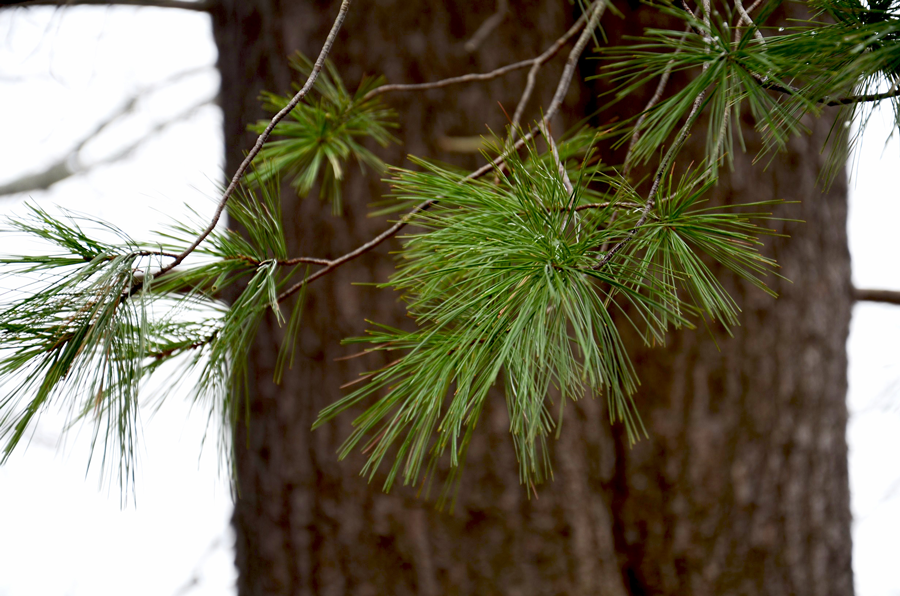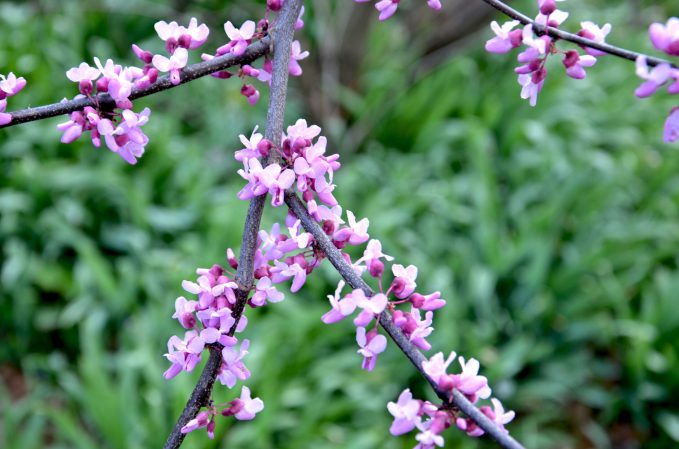The white pine (Pinus strobus) is great tree to know, particularly in the winter when snow covers many of the other wild edible and useful plants. The native range of this tree is roughly from Minnesota to New England, and down the Appalachians to the Carolinas. White pine has dark gray bark, and its needles grow in bundles of five. Each needle has a very pale stripe, which is likely the reason this darker tree is called a “white” pine. Beyond being a great source of tinder, kindling, and firewood (or a handsome Christmas tree), it can also provide food, medicine, and even glue.
Food
The white pine is my favorite pine species for making needle tea and pine bark flour, two winter survival staples. The tea is easy to produce. Grab a tuft of green needles, rip them or chop them into small pieces, and drop them into some very hot water. Just steep the needles for 10 minutes and enjoy. One cup of tea made from one ounce of needles should provide roughly four times your daily allowance of Vitamin C. Important: Don’t boil the needles! Doing so makes the tea bitter and the heat destroys your Vitamin C.
To make pine bark flour, start by shaving off the inner layer of bark right next to the wood. This layer is rubbery and cream colored. Dry the strips until they’re brittle and grind them into flour. One pound of this flour offers about 600 calories and it’s good for extending your food supply by blending in with other flours.
Medicine
White pine (along with a few other ingredients) can make a great cough syrup, which is a handy remedy this time of year. This decoction/reduction of white pine bark and other herbs is most effective when quieting a persistent dry cough. Blend together:
- 3 parts white pine bark
- 1 part licorice root
- 1 part thyme leaf
- ½ part slippery elm bark
Blend roots and bark in a heavy pan. Add 16 ounces of cold water. Bring to a slow boil. Simmer for 30 minutes. Strain mixture through a sieve, return liquid to heat. Continue heating to reduce volume by half (8 ounces).
While still hot, add 2 or 3 well-rounded tablespoons of honey or molasses.
Glue
Any species of pine will produce a sticky resin that oozes from wounds and broken spots on the trunk and branches, but you can get a lot of good quality pitch from white pine. The pitchy sap can be used to make a good glue, strong enough to haft arrowheads and secure tools to their handles. Collect as much sap as you can find, and place it into a metal can (or, in a primitive setting, a sea shell). Set this container of sap in the coals of a dying fire and allow the turpentine and other volatiles to bubble away. Remove small containers of sap from the heat after a few minutes, or remove big containers after 20 to 30 minutes. The sap should be shiny and wet looking, but hard as a rock once it cools. If it’s still sticky when cool, cook it a little more.
This glue can be blended with aggregate material while it’s still hot. Powdered charcoal and eggshells are common additives. Plant fiber, stone dust, and sand can also be used. This additional material yields a bigger batch of pitch glue, and will help to prevent cracking. To use this unique glue, heat the surfaces that you plan to glue together over a fire, and reheat the glue to a molten state. Work very quickly to apply the hot glue and bring the heated surfaces together. Once cool, the bond will be slightly brittle, but secure and waterproof.









